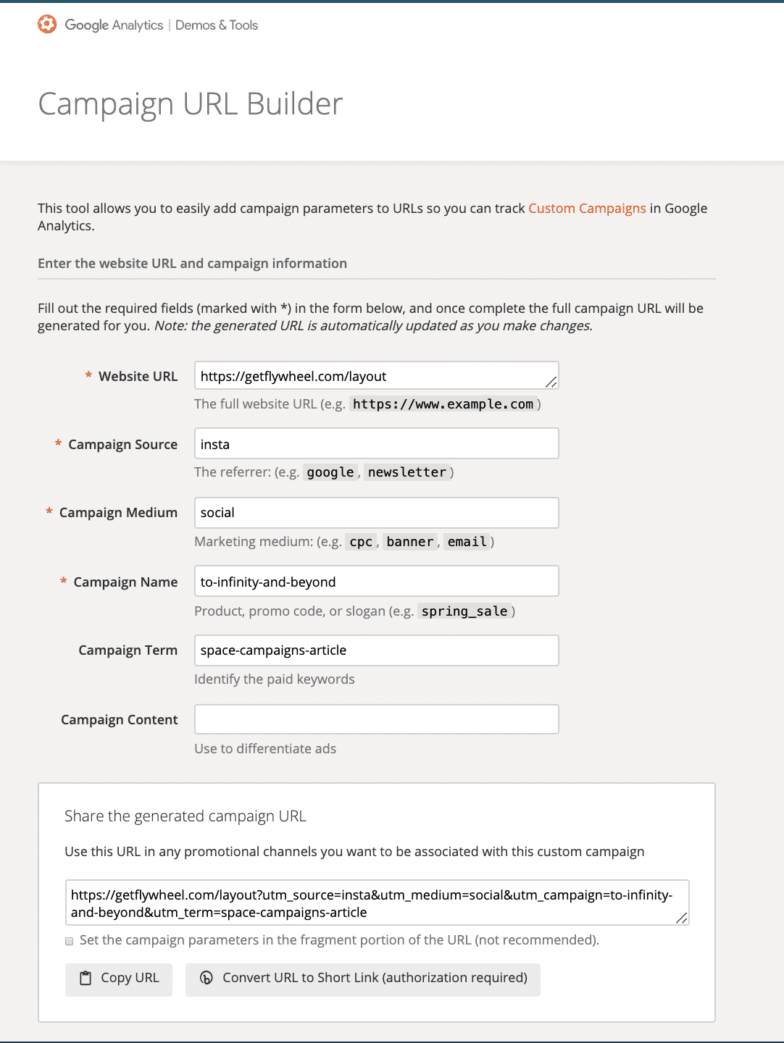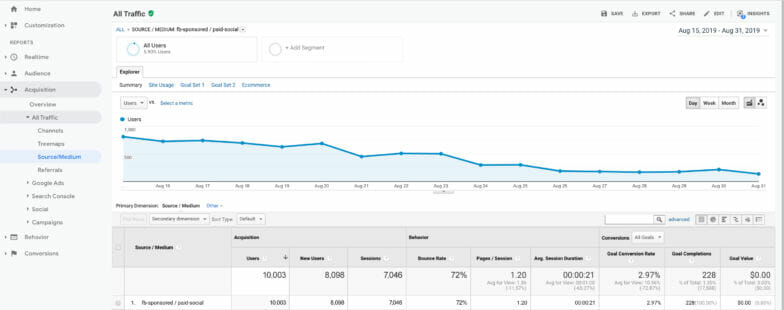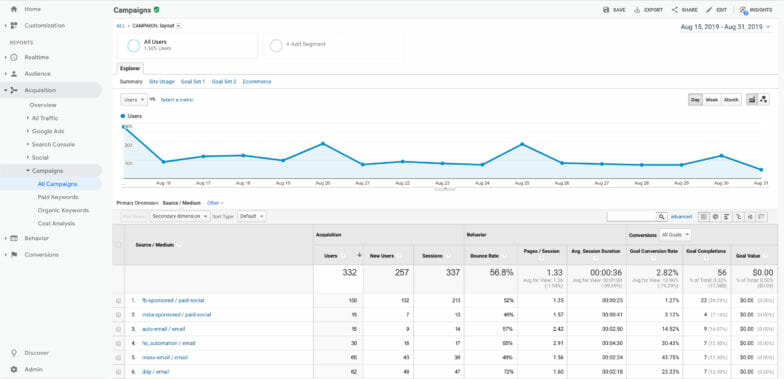How to Create UTM Tags
In today’s marketing landscape, tracking how various initiatives across multiple channels perform is not only a nice to have, but a need to have. This is an extensive, yet necessary task because there are so many ways to accomplish this, and it can seem a bit overwhelming at first. But, don’t fret! One of my favorite ways to solve this problem is by using UTM parameters on any link we create.
Whether you’re a UTM tagging expert or the concept is entirely new for you, in this article I’ll be tackling the following topics for deeper understanding:
- A walk-through of what UTM tags are
- How to build them
- A free tool to build UTM parameters as a team
- How to navigate the reporting side of UTM tags
What are UTM Tags?
According to Neil Patel, UTM stands for Urchin Tracking Module – a web analytics software that serves as the base for Google Analytics. Fun fact: anything succeeded with ‘?’ within a URL is a parameter. This parameter serves as a tag on a URL which, once clicked, sends data back to Google Analytics, allowing you to track which elements of your online marketing strategy were most effective in a campaign.
Tracking also allows Google Analytics to decide where traffic is coming from as well as what campaign directed a user to your site. When UTM tags are correct, this tracking speeds up your process for knowing what’s working and what’s not. It neatly organizes campaign traffic together, allowing you to have quick glances, but also in-depth analysis when needed.
UTM Parameters
The meat of UTM tags (the structure of parameters) contain five elements for tracking. The first three are required parameters and the last two are optional:
- Campaigns
- Medium
- Source
- Content
- Term
Campaigns
utm_campaign= The name does most of the explanation here – this parameter is to identify which campaign this link rolls into, such as a promotion or specific webinar.
Medium
utm_medium= This parameter allows you to package up where your traffic is coming from in a zoomed out lens, such as email or social.
Source
utm_source= A more detailed look into where your traffic is coming from. This could include all the different types of social media platforms.
Content
utm_content= Not a required piece, this one is a variable to let you identify more about which specific link was clicked on. (For example, you could use this to distinguish different copy or creative variations associated with a link).
Term
utm_term= This one is less often used and not required. It’s primarily for PPC campaigns to see which keyword brought in the session.
How to Build a UTM Tag
There are SO many ways to build a UTM tag, and there’s no definitive right or wrong way to do so (with the exception of a few different formatting rules).
Start with Strategy
First and foremost, before rolling up your sleeves and whipping up tags for all of your links, take a step back and ask yourself a few questions to begin framing your strategy. These questions will help you to think critically about what you need in the end result so you can make the decision later on how to strategically use parameter elements.
- Where’s the traffic coming from?
- How is it coming to me?
- Why is it coming?
Define your Parameters
There are numerous ways to use UTM tags, and you have to decide what will work for you and your business. We asked ourselves these same questions to decide our strategy. I’ll share examples of what we use throughout these points to help visualize it a bit further.
Campaigns
Think about the main things you want to track as one big picture when deciding what your campaigns are. This can seem a little intimidating at first, because there are so many different ways it could be organized.
Mediums
When deciding what your medium names are, think of how you’d sort all of the different traffic sources into a higher category. We like to look at medium as almost a sub folder under a major folder (campaign) for all sources to roll up to – a macro look at where your traffic is coming from. Here are a few examples!
- Social: This includes all organic social media channels. Sources that roll up to this medium would include Twitter, Facebook, Instagram, and so on.
- Paid: Any paid initiative would roll into this medium, from paid social posts to PPC ads.
- Email: All emails we send from all of our various stages and products all get tagged with this medium.
Sources
The micro view of understanding where your traffic is coming from. This allows you to zoom in a level deeper to know more about the traffic. There can be quite a few different sources to choose from, so here’s a couple to illustrate the idea:
- Social media platforms: Twitter, Facebook, Instagram, or Linkedin.
- Paid: Display, PPC, Sponsored Facebook posts, Sponsored Instagram posts, or Sponsored Twitter posts.
Content
Think of something here that you’d easily be able to identify if you wanted to see which email, ad, or social post drove a link click. For instance, if you’re doing multiple variants in an advertising campaign, you might put copy1-image1 so you can quickly identify which creative and copy it was.
A screenshot of an example of these together:

Important tips: When writing all of these, there are three important tips to remember in order for your strategy and the function of UTM parameters to work properly:
- Always use a ‘-’ as a space character. By hitting the spacebar in the builder, the code will be broken up.
- Lowercase all letters within the parameter.
- Consistency! The hardest part of UTM tags, in my opinion, is keeping all of the elements above consistent. While inconsistency won’t technically break anything, it’s better to keep everything as neat as possible in Google Analytics.
Find Your Favorite Tool
Now that you have your strategy ready to rock and roll, the next part is the actual building stage! Good news – there are a couple of handy tools on the internet to help guide you.
Google Analytics Campaign URL Builder
Coming from Google themselves, this tool makes building UTM tags a complete breeze. Simply just plug in your tags and they’ll build the entire thing for you so you can easily copy and paste. You can even connect it to your Bitly account if you prefer shorter links!

Reporting
The reason why we use UTM tags – reporting! Now that you’ve done all of your hard work deciding on a strategy and building tags, let’s walk through the data section of how your links are doing in Google Analytics.
Once you’re in your Google Analytics dashboard, there are two different places to find your tracking.
1. Acquisition > All Traffic > Source/Medium
Want to know which traffic sources are bringing in the most site visits? Or possibly, at a high level, which channel is converting the highest? This view is the perfect solution!

2. Acquisition > Campaigns > All Campaigns
If you’re looking into campaign performance for further insights, this view is the way to go. It’s sorted by campaign first, and then you can deep dive into medium, source, and content to get a further look in.

Conclusion
Being able to quantify marketing efforts is so helpful to constantly keep improving, and UTM tags are a great tool to add to your trusty toolkit. Now you’re equipped and well on your way to becoming a UTM tagging master!











